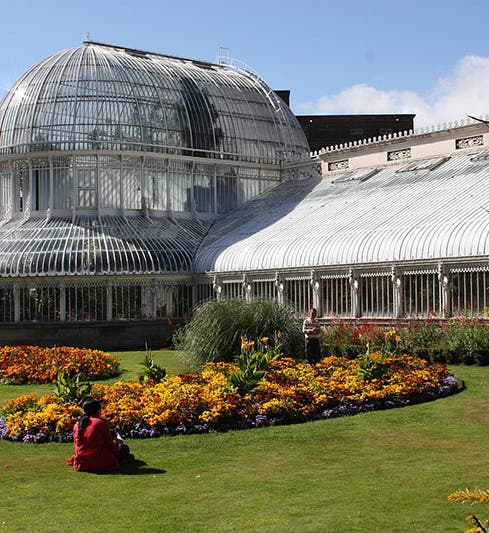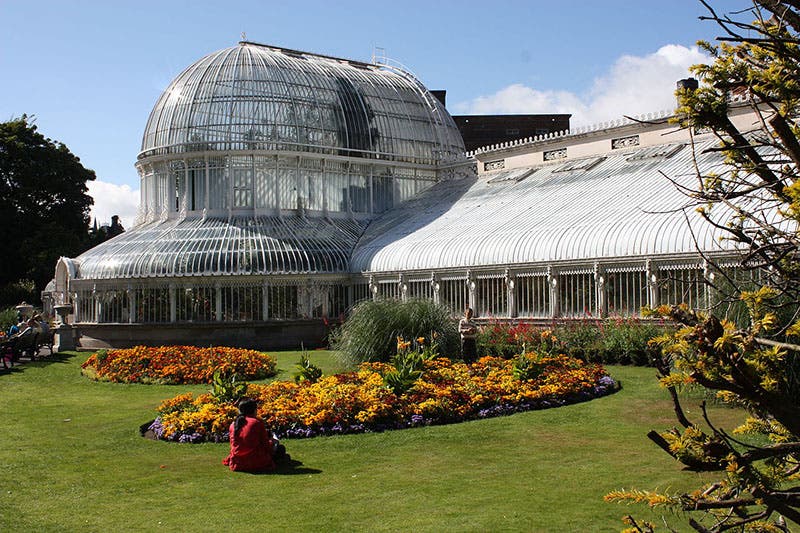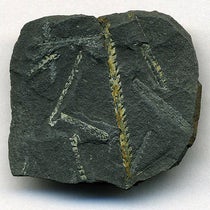Scientist of the Day - Richard Turner
Richard Turner, an Irish ironmaster, died Oct. 31, 1881, at the age of about 83. I was going to begin by stating that not many ironmasters have made it into the ranks of Scientist of the Day, but I find that we have done Abraham Darby III and John Wilkinson, who collaborated to erect the first cast-iron bridge in the world, Iron Bridge, over the Severn in Shropshire, in 1779. We have also featured William Hazledine, who provided the iron for many of Thomas Telford's bridges. We should have included Henry Cort, who developed the puddling process that made high-quality wrought iron possible, but we haven't yet. Cort was called the Tubal-cain of the 18th century. We should probably do Tubal-cain as well.
So iron making has received more respect here than I remembered, and that is as it should be, because without quality cast and wrought iron, much of Victorian-era architecture would have been impossible. Turner came from Dublin and established there a huge iron works that supplied iron to much of Great Britain. Turner is noted mostly for building or providing the iron for large glass houses, which were to take Victorian England by storm. The first large glass house was the "Great Stove" conservatory erected in the gardens of Chatsworth House, beginning in 1837, which is usually attributed to Joseph Paxton, although many argue it was really the work of Decimus Burton. Many other large glass-and-iron structures immediately followed, mostly for botanic gardens, and for many of these, Turner supplied the iron, and often, the design.
Turner’s first iron-and-glass house was the Palm House for the Royal Botanic Gardens at Belfast, which Turner constructed, to the design of Charles Lanyon (first image). Unlike the Chatsworth Conservatory, the Belfast Palm House still survives. Turner then built (1848) what is called the Curvilinear Range for the National Botanic Gardens in Glasnevin, Dublin, which has also survived. This latter structure is colossal, although larger buildings were to come (third and fourth images). Much later (1883), Turner designed an iron Palm House to replace the wooden one that blew down at Glasnevin; it is exceedingly photogenic (fifth image).
Turner's most famous glass building was one he built in collaboration with the noted Victorian architect Decimus Burton: The Palm House at Kew Gardens in London. How the Irish ironmonger Turner ever hooked up with the high-society Burton is a mystery, but it was a fruitful union. The Palm House at Kew, completed in 1848, is a lovely structure, with its gracefully curved glass and iron members. Most historians of architecture prefer the Palm House at Kew to the later Crystal Palace as a much more elegant building. It was (and is) over 360 feet long and stands 65 feet tall. It was the first building of this type built of wrought iron.
Turner built a variety of other iron structures; many of the railway sheds that covered the tracks at large train stations were designed and built by Turner, such as the shed at the Lime Street Station in Liverpool. The use of glass and iron changed these sheds from potentially being dingy caverns to actually being well-lit, inviting interior spaces.
Turner, like hundreds of other builders, submitted an entry for the design competition for the Crystal Palace to be built for the Exhibition of 1851 in London. It is said that his design was the runner up to that of Paxton. I have never seen Turner’s submitted design, but I have to believe that it was far more stylish than the boxy structure that was actually built, and which you can see here.
William B. Ashworth, Jr., Consultant for the History of Science, Linda Hall Library and Associate Professor emeritus, Department of History, University of Missouri-Kansas City. Comments or corrections are welcome; please direct to ashworthw@umkc.edu.













